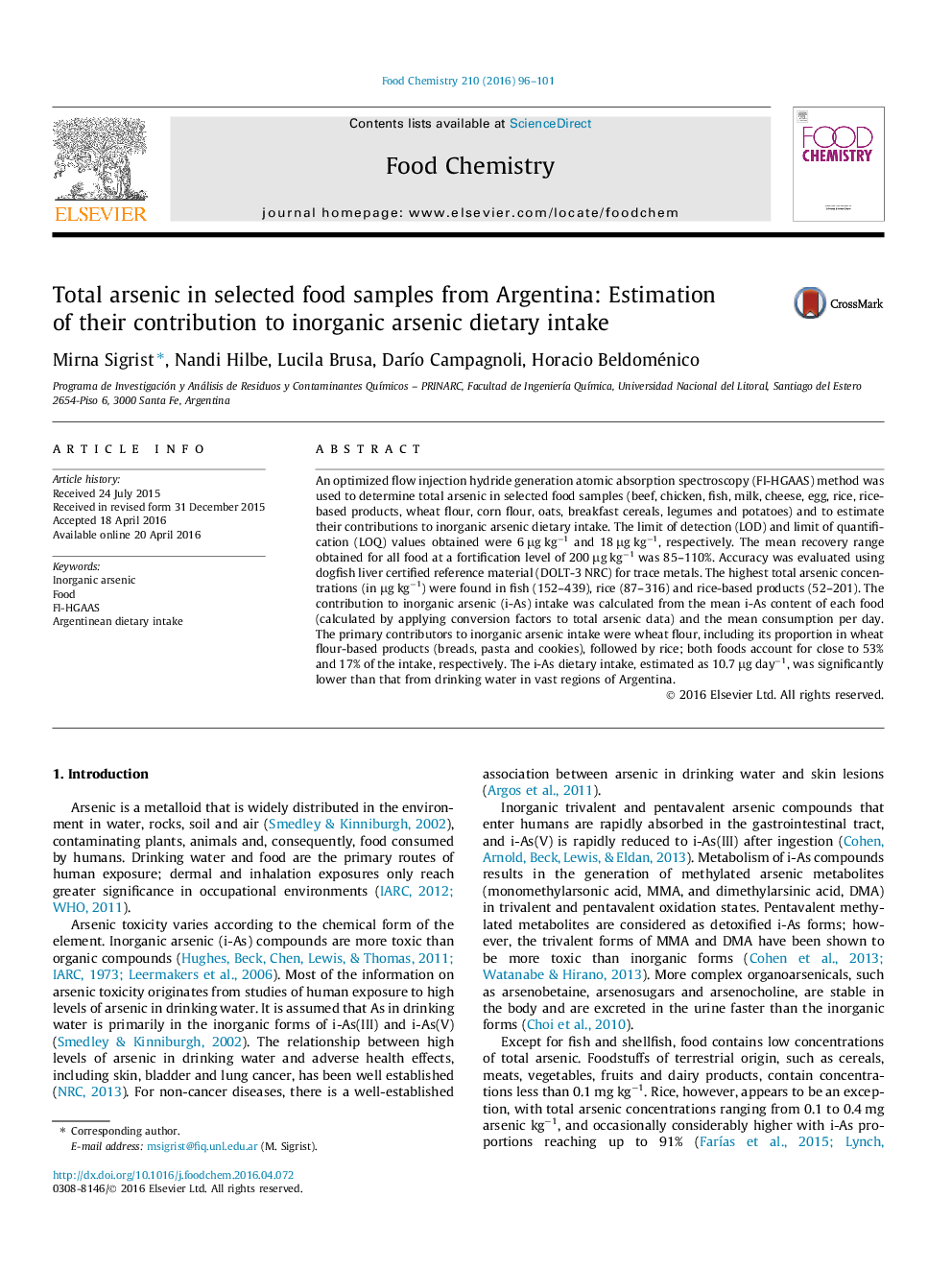| Article ID | Journal | Published Year | Pages | File Type |
|---|---|---|---|---|
| 7588053 | Food Chemistry | 2016 | 6 Pages |
Abstract
An optimized flow injection hydride generation atomic absorption spectroscopy (FI-HGAAS) method was used to determine total arsenic in selected food samples (beef, chicken, fish, milk, cheese, egg, rice, rice-based products, wheat flour, corn flour, oats, breakfast cereals, legumes and potatoes) and to estimate their contributions to inorganic arsenic dietary intake. The limit of detection (LOD) and limit of quantification (LOQ) values obtained were 6 μg kgâ1 and 18 μg kgâ1, respectively. The mean recovery range obtained for all food at a fortification level of 200 μg kgâ1 was 85-110%. Accuracy was evaluated using dogfish liver certified reference material (DOLT-3 NRC) for trace metals. The highest total arsenic concentrations (in μg kgâ1) were found in fish (152-439), rice (87-316) and rice-based products (52-201). The contribution to inorganic arsenic (i-As) intake was calculated from the mean i-As content of each food (calculated by applying conversion factors to total arsenic data) and the mean consumption per day. The primary contributors to inorganic arsenic intake were wheat flour, including its proportion in wheat flour-based products (breads, pasta and cookies), followed by rice; both foods account for close to 53% and 17% of the intake, respectively. The i-As dietary intake, estimated as 10.7 μg dayâ1, was significantly lower than that from drinking water in vast regions of Argentina.
Keywords
Related Topics
Physical Sciences and Engineering
Chemistry
Analytical Chemistry
Authors
Mirna Sigrist, Nandi Hilbe, Lucila Brusa, DarÃo Campagnoli, Horacio Beldoménico,
